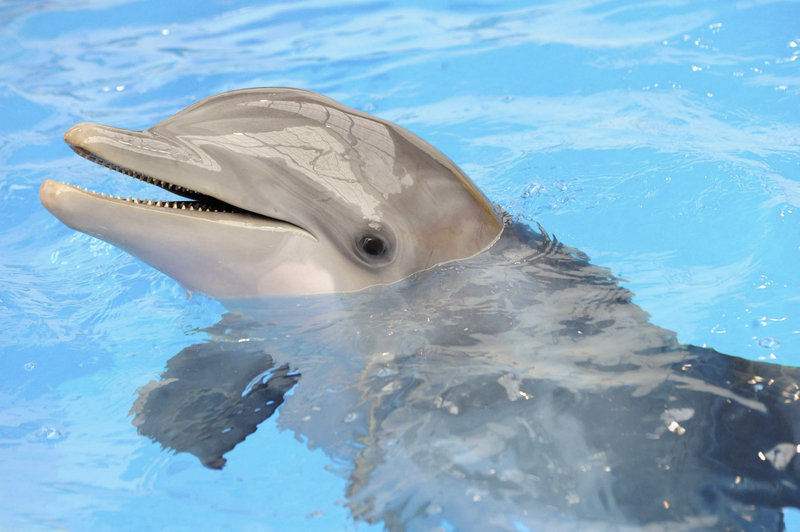WASHINGTON — Marine scientists said Tuesday that a die-off of bottlenose dolphins along the Atlantic Seaboard is the largest in a quarter-century and is almost certainly from the same cause as the 1987-88 outbreak: cetacean morbillivirus, which is spreading throughout the population.
From New York to North Carolina, 357 dead or dying dolphins have washed ashore since July 1, and authorities have received numerous additional reports of carcasses floating in the ocean, said Teri Rowles, director of the marine mammal health and stranding response program for the National Marine Fisheries Service, an agency of the National Oceanic and Atmospheric Administration. More than half the carcasses have come ashore in Virginia, she said.
The measles-like virus has been confirmed or is suspected in 32 of 33 dolphins tested so far, Rowles said. Marine officials are looking at possibility of other factors, including high levels of PCB (polychlorinated biphenyl) and other chemicals in the water, but they have not linked anything else to the die-off.
From 2007 to 2012, the average number of yearly strandings in the same states was 36, Rowles said. The last big outbreak, in 1987-1988, killed more than 700 dolphins.
“If, indeed, this plays out the way that die-off occurred, we’re looking at the die-off being higher and the morbillivirus spreading southward,” Rowles said.
The virus poses no threat to humans, but secondary infections could be dangerous. Authorities urged people to stay away from stranded dolphins. “For people not trained in working with these animals and who don’t understand the risk, it’s much better . . . to stay away from them, particularly if you have open wounds,” Rowles said.
It is not clear what started most recent die-off, but Jerry Saliki, a virologist at the University of Georgia, said that some animals carry the virus naturally and that when a population’s collective immunity declines, the virus can take hold and spread. This appears to happen episodically and continues until a sufficient number of dolphins are exposed and develop immunity to the virus, he said.
Scientists are investigating whether the die-off might be moving south with migrating dolphins.
Send questions/comments to the editors.



Success. Please wait for the page to reload. If the page does not reload within 5 seconds, please refresh the page.
Enter your email and password to access comments.
Hi, to comment on stories you must . This profile is in addition to your subscription and website login.
Already have a commenting profile? .
Invalid username/password.
Please check your email to confirm and complete your registration.
Only subscribers are eligible to post comments. Please subscribe or login first for digital access. Here’s why.
Use the form below to reset your password. When you've submitted your account email, we will send an email with a reset code.